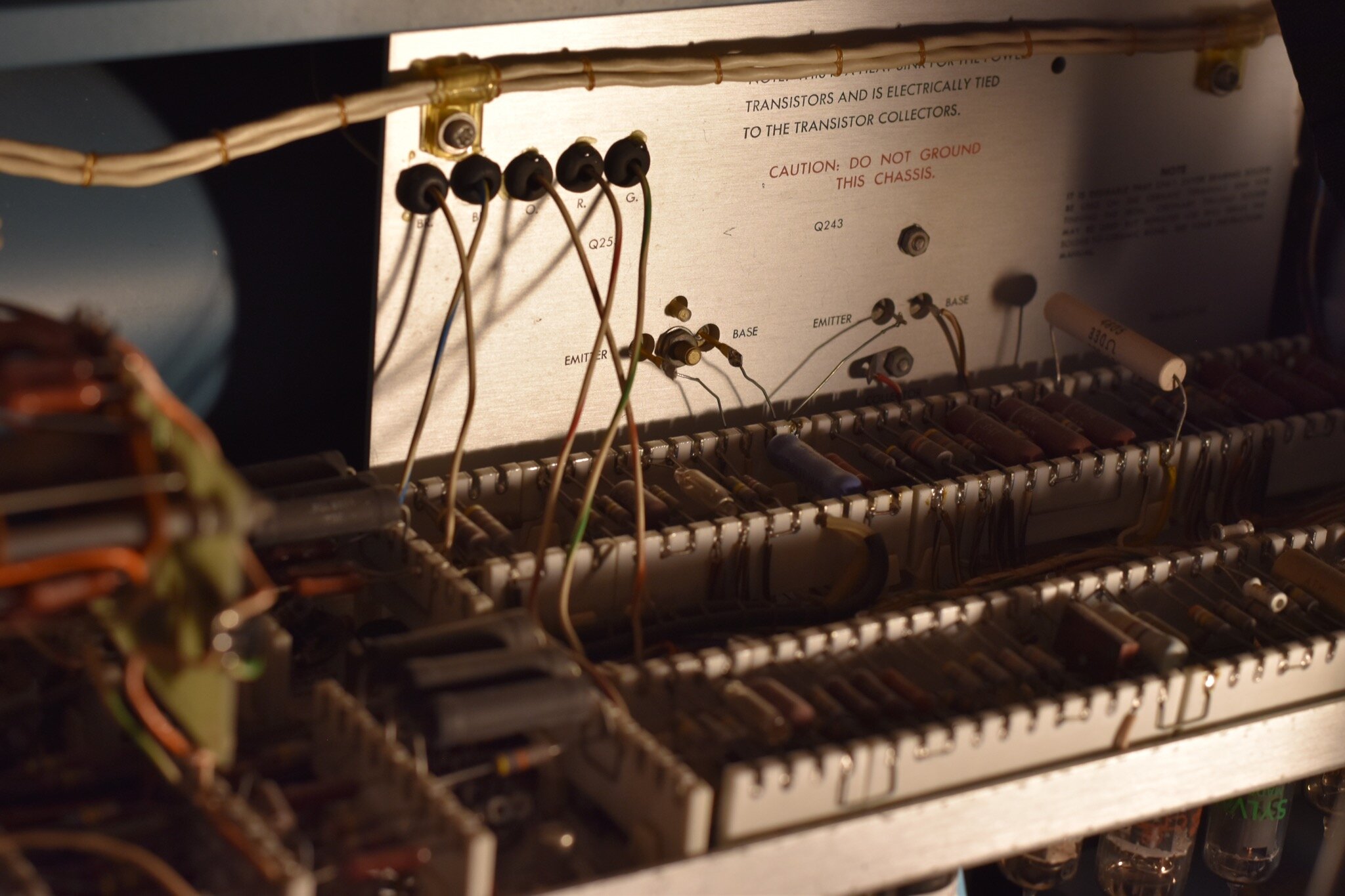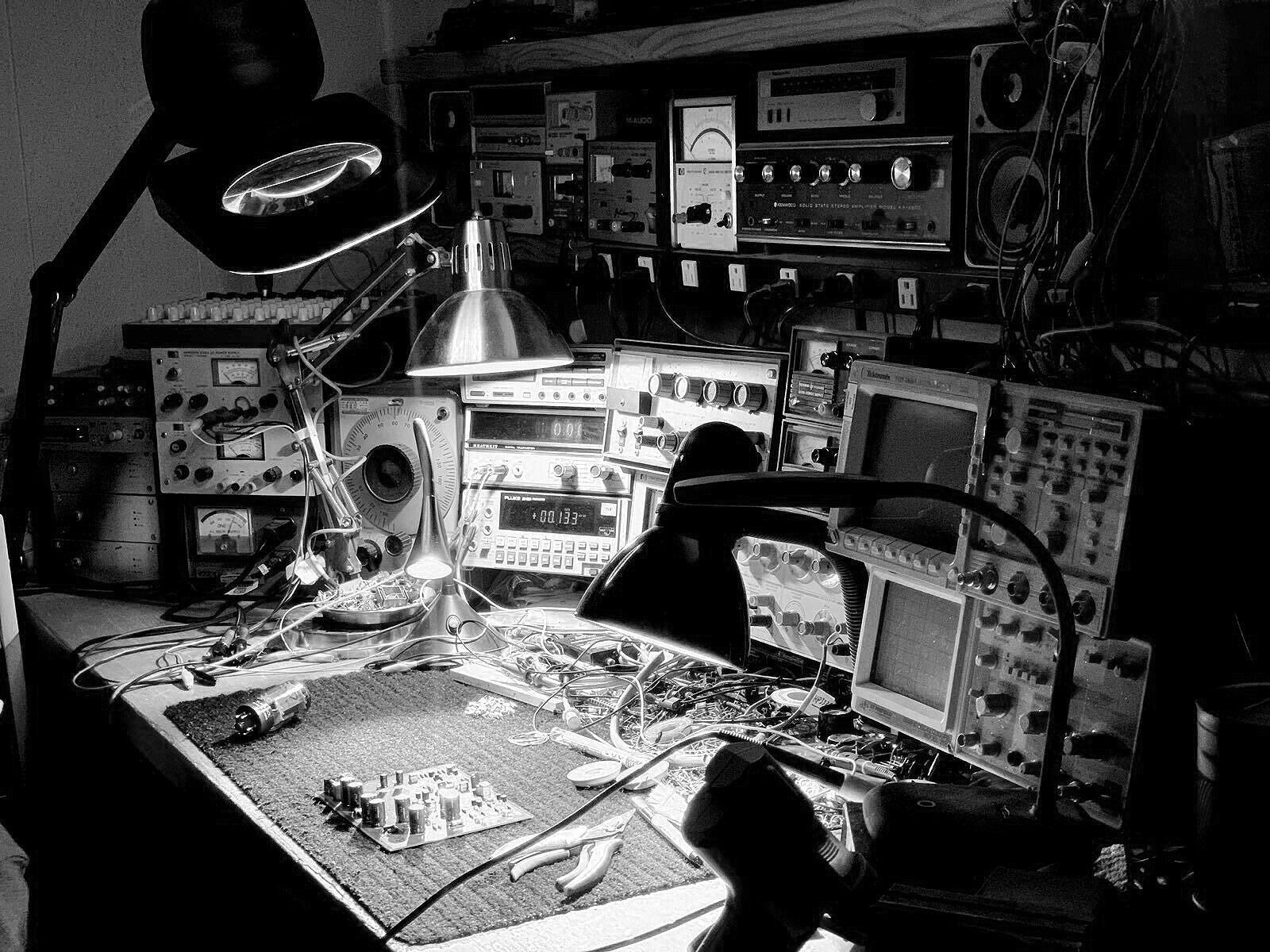
Why our Better Technology Produces Superior Sound
A Detailed Look Behind the Scenes
The conventional design approach for RIAA magnetic cartridge preamplifiers has remained largely the same since the early 1980s - using op-amps and/or discrete differential J-FET or transistor (or FET/BJT combo) inputs, relatively low power supply rails - from +10V to +45VDC - and, often, high feedback ratios. These facilitate low-cost automated (usually foreign) production and high corporate profit margins.
As semiconductors vary rather widely in their characteristics, the conventional designer is required to use large amounts of loop feedback, “forcing” the active parts into a region that produces acceptable results on the test bench. This is true of most discrete design, and all traditional implementations of op-amps.
However, these techniques cause individual gain stages to produce very substantial distortion - often many percent (which can, in fact, be easily measured “inside the loop”). When the global feedback loop is closed, the distortion residual, while low, is very slow to fall off towards the upper harmonics. When regular designers eschew feedback, they are forced to operate their gain stages in a differential manner - canceling the otherwise unavoidable large 2nd harmonic distortion produced by their work.
Additionally, when forced into clipping on a dynamic basis—either by record scratches or cartridge mistracking—the feedback loses all control. The gain stages attempt to jump from the closed-loop gain to the much higher open-loop gain. Clipping is often accompanied by bursts of hum and power supply noise breakthrough—since the PSRR declines significantly under open-loop conditions.
Either way, even on a clean and noise-free LP, this predominately high-order distortion residual can be highly objectional to the ear, which itself produces substantial low-order distortion. Some observers believe the brain can correct for the ear’s own spectral distortion (as well as minor, similarly low-order, electronic distortion)—but is flummoxed by even minute amounts of high-order distortion products because those occur so rarely in nature.
Experts such as D. L. Shorter of the BBC and Harry Olson of RCA remarked in the 1940’s that conventional distortion (THD) metrics often don’t align with the ear’s perception of distortion. The famous 1954 Radiotron Designer’s Handbook (RDH4) is replete with references to the triode vs. pentode debate of that era.
In one sense, all well and good - to have these design debates, together with the resulting diverse options in today’s marketplace.
However, until now, these options have been limited to the true High-End audio market where designers have had the budget to innovate fully discrete designs, whether tube, J-FET or BJT (Bipolar Junction aka conventional transistor).
The music lover has had to be content with mass-market, textbook-designed electronics which often use high feedback, low voltage rails, and are overwhelmingly based on op-amps. And those current “affordable” vacuum tube (or hybrid) designs are often woefully under-engineered by inexperienced designers, failing to live up to the promised performance.
What is the result? Crescendos cause the listener to dive for the volume control and ticks and pops are regularly distracting. Vinyl has nostalgia for older listeners and certainly a new “cool factor”, but truth be told, it often doesn’t live up to its potential, nor even its rich and storied past.
Some adventurous consumers have explored refurbished classic-era tube gear like the Dynaco PAS 2 and Dynaco PAS 3 series. Unfortunately, they have often discovered that such gear has limited dynamics and an overall “soft”, even “mushy” sound, in stock form. They are large, work well only for certain types of music and listeners, and exhibit questionable reliability due to increasing age.
Classic discrete solid-state gear from the ‘60s and ‘70s such as the Dynaco PAT 4, Dynaco PAT 5, Harman Kardon Citation 11 and nearly all built-in phono preamp stages in stereo receivers have their own serious limitations including excessive high-frequency distortion and noise.
Darlington Labs now offers multiple phono preamps that set new standards for true high performance, as well as incredible value, to our discerning customers.
By using a combination of modern parts, innovative proprietary designs, and NOS (New-Old-Stock) hand-matched High-Voltage J-FETs, our experienced design team delivers a level of dynamics, musicality, dimensionality, and clarity which is within reach of many music lovers - for the very first time.
Low distortion, the Single-Ended way.
Just in time for the current Vinyl Renaissance.
We couple this with hand-built American quality and back it with USA-based technical staff and an in-house design team. Feel free to contact us directly if we can answer your questions or discuss system recommendations and matching.
We believe that you are only one step away from obtaining more enjoyment from your record collection than you previously thought was possible.


“I reckon the Phono preamplifier is one of the most interesting and challenging topics an audio gear designer may ever decide to face.
It is a deadly cocktail of massive gain, accurate frequency response shaping, low noise, and vast headroom demands.”
— Diego Nardi, Audio Note Italia, Sound Practices magazine, Issue 14, 1997.
